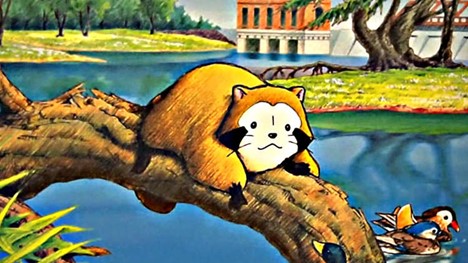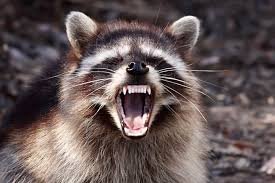Japanese racoons
In 1963, American writer Sterling North launched his most popular book, Rascal: A Memoir of a Better Era. It told the story of a young boy called Sterling who went on adventures with his raccoon sidekick Rascal, and it became such a huge hit that Disney decided to turn it into a live-action movie. In Japan, Rascal’s adventures inspired a 52-episode anime series called Rascal the Raccoon (Araiguma Rasakaru), which ran for a year in 1977 and made raccoons the most sought-after pets in the country. In response to the show people in Japan began importing raccoons to keep as pets. At its peak, more than 1,500 raccoons were being imported to Japan each year, said Smithsonian Magazine. But while the Japanese government moved quickly to ban both the import of raccoons, and the practice of keeping them as pets, it was too little, too late.
Raccoons are not easy pets, Jaime Arslan, owner of two rescue raccoons, wrote on her Instagram page. Raccoons, she said, “can be very destructive in a home” and need to be constantly entertained. Additionally, raccoons “can and will bite,” either as aggression or as a form of play. Their care, too, is extremely expensive, as most veterinarians will not see a raccoon. Many Japanese families learned these lessons the hard way, and simply released their pet raccoons into the wild after they became unmanageable for their homes. As raccoons have no natural predators in Japan, they were quickly able to establish a population, and are now found in each of the country’s 47 prefectures. Japan’s raccoon infestation has gotten considerably worse over the last decade. In 2013, the Japanese government reiterated the need to combat raccoons as an invasive species. Raccoons are responsible for millions of dollars in agricultural damage in Japan each year. In 2022, raccoons were blamed for causing nearly $3 million in damage to crops.
Combating the raccoons has proven to be extremely difficult due to their intelligent natures, said Kyodo News. Mature raccoons don’t make great pets. In the book, Sterling realizes that Rascal is a wild animal meant to live in the wild. In cities, the racoons started going through the trash in search of food, even attacking people who got between them and their trash, and just being a natural nuisance. Technically, Japan has its own raccoon species, tanuki, the raccoon dog, but it can’t compete with the common American raccoon in terms of adaptability, so it is in danger of losing its territory. They compete for the same resources, but the American raccoon is much better at securing them. Some Japanese prefectures have taken the controversial decision to cull the animals. This has attracted the wrath of animal rights activists and did little in terms of controlling raccoon numbers. The American racoons are both smart and strong. This means they can get out of live traps and will claw their way into wooden structures for housing as well as food. Despite the raccoon infestation currently plaguing Japan, the anime that started it all is still hugely popular in Japan, and people love Rascal as much as always.
Racoon Sushi
Our son-in-law, who is Japanese, hosted a dinner for the family at a local Japanese restaurant. When we picked up our chopsticks, he asked the waiter for a fork. “You’re Japanese,” commented my nephew. “Why are you the only one not using chopsticks?” With a laugh, my son in law replied, “I like to show off how well I can eat with a fork.”
Q: How many Japanese does it take to screw in a light bulb?
A: It doesn’t matter because they’re all too short.
What did the cannibals eat in Tokyo?
Rawmen
I called Animal Welfare today and said, “I’ve just found a suitcase in the woods containing four small racoons.”
“That’s terrible,” she replied, “We’re they moving?”
“I’m not sure, to be honest,” I said, “but if they were that would explain the suitcase.”
May 21st Birthdays
1964 – Carol Lawrence, 1991 – Sarah Ramos, 1993 – Olivia Olson, 1987 – Ashlie Brillault
1952 – Mr. T., 1998 – Kevin Quinn, 1993 – Hutch Dano, 1971 – Mohanlol




